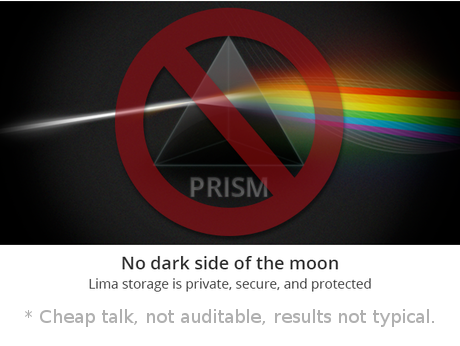Economics and the Common(s): From Seed Form to Core Paradigm. A report on an international conference on the future of the commons (pdf) by David Bollier. Section on the knowledge stream (which I coordinated; pre-conference post) copied below, followed by an addendum with thanks and vague promises. First, video of the stream keynote (slides) by Carolina Botero (introduced by me; archive.org copy).
III. “Treating Knowledge, Culture and Science as Commonsâ€
Science, and recently, free software, are paradigmatic knowledge commons; copyright and patent paradigmatic enclosures. But our vision may be constrained by the power of paradigmatic examples. Re-conceptualization may help us understand what might be achieved by moving most provisioning of knowledge to the commons; help us critically evaluate our commoning; and help us understand that all commons are knowledge commons. Let us consider, what if:
- Copyright and patent are not the first knowledge enclosures, but only “modern†enforcement of inequalities in what may be known and communicated?
- Copyright and patent reform and licensing are merely small parts of a universe of knowledge commoning, including transparency, privacy, collaboration, all of science and culture and social knowledge?
- Our strategy puts commons values first, and views narrow incentives with skepticism?
- We articulate the value of knowledge commons – qualitative, quantitative, ethical, practical, other – such that knowledge commons can be embraced and challenged in mainstream discourse?
These were the general questions that the Knowledge, Culture and Science Stream addressed.
Knowledge Stream Keynote Summary
Carolina Botero Cabrera, a free culture activist, consultant and lawyer from Colombia, delivered a plenary keynote for the Knowledge Stream entitled, “What If Fear Changes Sides?†As an author and lecturer on free access, free culture and authors’ rights, Botero focused on the role of information and knowledge in creating unequal power relationships, and how knowledge and cultural commons can rectify such problems.
“If we assume that information is power and acknowledge the power of knowledge, we can start by saying that controlling information and knowledge means power. Why does this matter?†she asked. “Because the control of information and knowledge can change sides. The power relationship can be changed.â€
One of the primary motives of contemporary enclosures of information and knowledge, said Botero, is to instill fear in people – fear of violating copyright law, fear of the penalties for doing so. This inhibits natural tendencies to share and re-use information. So the challenge facing us is to imagine if fear could change sides. Can we imagine a switch in power relationships over the control of knowledge – how we produce, distribute and use knowledge? Botero said we should focus on the question: “How can we switch the tendency of knowledge regulation away from enclosure, so that commons can become the rule and not the exception?â€
“There are still many ways to produce things, to gain knowledge,†said Botero, who noted that those who use the word “commons†[in the context of knowledge production] are lucky because it helps name these non-market forms of sharing knowledge. “In Colombia, we don’t even have that word,†she said.
To illustrate how customary knowledge has been enclosed in Colombia, Botero told the story of parteras, midwives, who have been shunted aside by doctors, mostly men, who then asserted control over women’s bodies and childbirth, and marginalized the parteras and their rich knowledge of childbirth. This knowledge is especially important to those communities in remote areas of Colombia that do not have access to doctors. There is currently a huge movement of parteras in Colombia who are fighting for the recognition of their knowledge and for the legal right to act as midwives.
Botero also told about how copyright laws have made it illegal to reproduce sheet music for songs written in 18th and 19th century Colombia. In those times, people simply shared the music among each other; there was no market for it. But with the rise of the music industry in the 20th century, especially in the North, it is either impossible or unaffordable to get this sheet music because most of it is copyrighted. So most written music in Colombia consists of illegally photocopied versions. Market logic has criminalized the music that was once natural and freely flowing in Colombian culture. Botero noted that this has increased inequality and diminished public culture.

She showed a global map illustrating which nations received royalties and fees from copyrights and patents in 2002; the United States receives more than half of all global revenues, while Latin America, Africa, India and other countries of the South receive virtually nothing. This is the “power relationships†that Botero was pointing to.
Botero warned, “We have trouble imagining how to provision and govern resources, even knowledge, without exclusivity and control.†Part of the problem is the difficulty of measuring commons values. Economists are not interested, she said, which makes it difficult to go to politicians and persuade them why libraries matter.
Another barrier is our reliance on individual incentives as core value in the system for regulating knowledge, Botero said. “Legal systems of ‘intellectual property’ place individual financial incentives at the center for knowledge regulation, which marginalizes commons values.†Our challenge is to find ways to switch from market logics by showing that there are other logics.
One reason that it is difficult to displace market logics is because we are reluctant or unable to “introduce the commons discourse from the front door instead of through the back door,†said Botero. She confessed that she herself has this problem because most public debate on this topic “is based on the premise that knowledge requires enclosure.†It is difficult to displace this premise by talking about the commons. But it is becoming increasingly necessary to do so as new policy regimes, such as the Transpacific Trade (TPP) Agreement, seek to intensify enclosures. The TPP, for example, seeks to raise minimum levels of copyright restriction, extend the terms of copyrights, and increase the prison terms for copyright violations.
One way to reframe debate, suggested Botero, is to see the commons “not as the absence of exclusivity, but the presence of non-exclusivity. Th is is a slight but important difference,†she said, “that helps us see the plenitude of non-exclusivity†– an idea developed by Séverine Dussolier, professor and director of the Revue Droit des Technologies de l’Information (RDTI, France). This shift “helps us to shift the discussion from the problems with the individual property and market-driven perspective, to a framework and society that – as a norm – wants its institutions to be generative of sharing, cooperation and equality.â€
Ultimately, what is needed are more “efficient and effective ways to protect the ethic and practice of sharing,†or as she put it, “better commoning.†Reforming “intellectual property†is only one small part of the universe of knowledge commoning, Botero stressed. It also includes movements for “transparency, privacy, collaboration, and potentially all of science and culture.â€
“When and how did we accept that the autonomy of all is subservient to control of knowledge by the few?†asked Botero. “Most important, can we stop this? Can we change it? Is the current tragedy our lack of knowledge of the commons?†Rediscovering the commons is an important challenge to be faced “if fear is going to change sides.â€
An Account of the Knowledge, Culture and Science Stream’s Deliberations
There were no presentations in the Knowledge Stream breakout sessions, but rather a series of brief provocations. These were intended to spur a lively discussion and to go beyond the usual debates heard at free and open software/free culture/open science conferences. A primary goal of the breakout discussions was to consider what it means to regard knowledge as a commons, rather than as a “carve-out†exception from a private property regime. The group was also asked to consider how shared knowledge is crucial to all commoning activity. Notes from the Knowledge Stream breakout sessions were compiled through a participatory titanpad, from which this account is adapted.
The Knowledge Stream focused on two overarching themes, each taking advantage of the unique context of the conference:
- Why should commoners of all fields care about knowledge commons?
- If we consider knowledge first as commons, can we be more visionary, more inclusive, more effective in commoning software, science, culture, seeds … and much more?
The idea of the breakout session was to contextualize knowledge as a commons, first and foremost: knowledge as a subset of the larger paradigm of commons and commoning, as something far more than domain-specific categories such as software, scientific publication and educational materials.
An overarching premise of the Knowledge Stream was the point made by Silke Helfrich in her keynote, that all commons are knowledge commons and all commons are material commons. Saving seeds in the Svalbaard Seedbank are of no use if we forget how to cultivate them, for example, and various digital commons are ultimately grounded in the material reality of computers, electricity infrastructures and the food that computer users need to eat.
There is a “knowledge commons†at the center of each commons. This means that interest in a “knowledge commons†isn’t confined to those people who only care about software, scientific publication, and so on. It also means that we should refrain from classifying commons into categories such as “natural resources†and “digital,†and begin to make the process of commoning itself the focal point.
Of course, one must immediately acknowledge that digital resources do differ in fundamental ways from finite natural resources, and therefore the commons management strategies will differ. Knowledge commons can make cheap or virtually free copies of intangible information and creative works, and this knowledge production is often distributed at very small scales. For cultural commons, noted Philippe Aigrain, a French analyst of knowledge governance and CEO of Sopinspace, a maker for free software for collaboration and participatory democracy, “the key challenge is that average attention becomes scarcer in a world of abundant production.†This means that more attention must be paid on “mediating functions†– curating – and “revising our cultural expectations about ‘audiences’.â€
It is helpful to see the historical roots of Internet-enabled knowledge commons, said Hilary Wainwright, the editor behind the UK political magazine Red Pepper and a research at the Transnational Institute. The Internet escalated the practice of sharing knowledge that began with the feminist movement’s recognition of a “plurality of sources.†It also facilitated the socialization of knowledge as a kind of collective action.
That these roots are not widely appreciated points to the limited vision of many knowledge commons, which tend to rely on a “deeply individualistic ethical ontology,†said Talha Syed, a professor of law at the University of California, Berkeley. This worldview usually leads commoners to focus on coercion – enclosures of knowledge commons – as the problem, he said. But “markets are problematic even if there is no monopoly,†he noted, because “we need to express both threats and positive aspirations in a substantive way. Freedom is more than people not coercing us.â€
Shun-Ling Chen, a Taiwanese professor of law at the University of Arizona, noted that even free, mass-collaboration projects such as Wikipedia tend to fall back on western, individualistic conceptions of authorship and authority. This obscures the significance of traditional knowledge and history from the perspective of indigenous peoples, where less knowledge is recorded by “reliable sources.â€
As the Stream recorded in its notes, knowledge commons are not just about individual freedoms, but about “marginalized people and social justice.†“The case for knowledge commons as necessary for social justice is an undeveloped theme,†the group concluded. But commons of traditional knowledge may require different sorts of legal strategies than those that are used to protect the collective knowledge embodied in free software or open access journal. The latter are both based on copyright law and its premises of individual rights, whereas traditional knowledge is not recognized as the sum of individual creations, but as a collective inheritance and resource.
This discussion raised the question whether provisioning knowledge through commons can produce different sorts of “products†as those produced by corporate enclosures, or whether they will simply create similar products with less inequality. Big budget movies and pharmaceuticals are often posited as impossibilities for commons provision (wrongly, by the way). But should these industries be seen as the ‘commanding heights’ of culture and medicine, or would a commons-based society create different commanding heights?â€
One hint at an answer comes from seeing informality as a kind of knowledge commons. “Constructed commons†that rely upon copyright licenses (the GPL for software, Creative Commons licenses for other content) and upon policy reforms, are generally seen as the most significant, reputable knowledge commons. But just as many medieval commons relied upon informal community cooperation such as “beating the bounds†to defend themselves, so many contemporary knowledge commons are powerful because they are based on informal social practice and even illegality.
Alan Toner of Ireland noted that commoners who resist enclosures often “start from a position of illegality†(a point made by Ugo Mattei in his keynote talk). It may be better to frankly acknowledge this reality, he said. After all, remix culture would be impossible without civil disobedience to various copyright laws that prohibit copying, sharing and re-use – even if free culture people sometimes have a problem with such disrespectful or illegal resistance. “Piracy†is often a precursor to new social standards and even ne w legal rules. “What is legal is continent,†said Toner, because practices we spread now set traditions and norms for the future. We therefore must be conscious about the traditions we are creating. “The law is gray, so we must push new practices and organizations need to take greater risks,†eschewing the impulse to be “respectable†in order to become a “guiding star.â€
Felix Stalder, a professor of digital culture at Zurich University of the Arts, agreed that civil disobedience and piracy are often precisely what is needed to create a “new normal,†which is what existing law is explicitly designed to prevent. “Piracy is building a de facto commons,†he added, “even if it is unaware of this fact. It is a laboratory of the new that can enrich our understanding of the commons.â€
One way to secure the commons for the future, said Philippe Aigrain of Sopinspace, is to look at the specific challenges facing the commons rather than idealizing them or over-relying on existing precedents. As the Stream discussion notes concluded, “Given a new knowledge commons problem X, someone will state that we need a ‘copyleft for X.’ But is copyleft really effective at promoting and protecting the commons of software? What if we were to re-conceptualize copyleft as a prototype for effective, pro-commons regulation, rather than a hack on enclosure?â€
Mike Linksvayer, the former chief technology officer of Creative Commons and the coordinator of the Knowledge Stream, noted that copyleft should be considered as “one way to “force sharing of information, i.e., of ensuring that knowledge is in the commons. But there may be more effective and more appropriate regulatory mechanisms that could be used and demanded to protect the commons.â€
One provocative speculation was that there is a greater threat to the commons than enclosure – and that is obscurity. Perhaps new forms of promotion are needed to protect the commons from irrelevance. It may also be that excluding knowledge that doesn’t really contribute to a commons is a good way to protect a commons. For example, projects like Wikipedia and Debian mandate that only free knowledge and software be used within their spaces.
Addendum
Thanks to everyone who participated in the knowledge stream. All who prepared and delivered deep and critical provocations in the very brief time allotted:
Bodó Balázs
Shun-Ling Chen
Rick Falkvinge
Marco Fioretti
Charlotte Hess
Gaëlle Krikorian
Glyn Moody
Mayo Fuster Morrell
Prabir Purkayastha
Felix Stalder
Talha Syed
Wouter Tebbens
Alan Toner
Chris Watkins
Also thanks to Mayo Fuster Morrell and Petros for helping coordinate during the stream, and though neither could attend, Tal Niv and Leonhard Dobusch for helpful conversations about the stream and its goals. I enjoyed working with and learned much from the other stream coordinators: Saki Bailey (nature), Heike Löschmann (labor & care), Ludwig Schuster (money), and especially Miguel Said Vieira (infrastructure; early collaboration kept both infrastructure and knowledge streams relatively focused); and stream keynote speaker Carolina Botero; and conference organizers/Commons Strategy Group members: David Bollier, Michel Bauwens, and Silke Helfrich (watch their post-conference interview).
See the conference wiki for much more documentation on each of the streams, the overall conference, and related resources.
If a much more academic and apolitical approach is of interest, note the International Association for the Study of the Commons held its 2013 conference about 10 days after ECC. I believe there was not much overlap among attendees, one exception being Charlotte Hess (who also chaired a session on Governance of the Knowledge and Information Commons at the IASC conference).
ECC only strengthened my feeling (but, of course I designed the knowledge stream to confirm my biases…) that a much more bold, deep, inclusive (domains and methods of commoning, including informality, and populations), critical (including self-critical; a theme broached by several of the people thanked above), and competitive (product: displacing enclosure; policy: putting equality & freedom first) knowledge commons movement, or vanguard of those movements. Or as Carolina Botero put it in the stream keynote: bring the commons in through the front door. I promise to contribute to this project.
ECC also made me reflect much more on commons and commoning as a “core paradigm” for understanding and participating in the arrangements studied by social scientists. My thoughts are half baked at best, but that will not stop me from making pronouncements, time willing.





